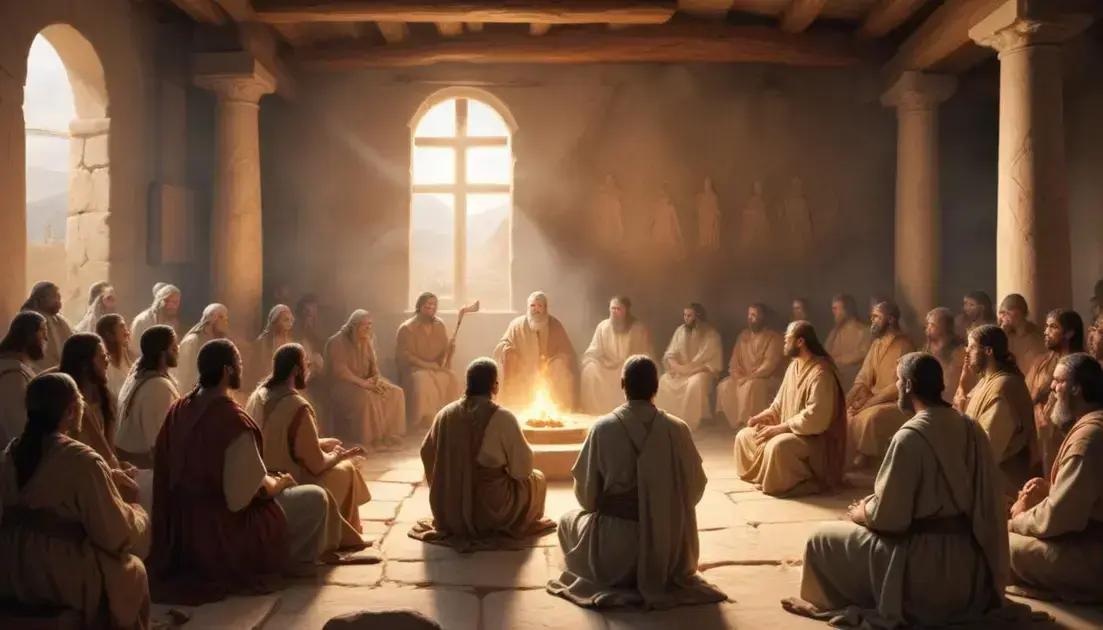
Montanism: Prophecy, Discipline and Tension in the Church
Montanism emerged in early Christianity, highlighting the significance of prophecy and strict discipline. Prominent figures like Montanus emphasized direct inspiration from the Holy Spirit, leading to debates over authority within the church. Tensions arose as traditional leaders resisted these new ideas, fearing a challenge to their control. The movement’s focus on personal revelations created rifts, reflecting a struggle between established teachings and fresh spiritual experiences. Understanding these dynamics helps illustrate the evolution of Christian faith and community in early history.
Montanism ignited a firestorm of discussion in early Christianity, sparking fierce debates over authority and charismatic movements. Have you wondered how these elements shape faith today?
Understanding Montanism
Understanding Montanism is key to grasping its impact on early Christianity. This movement emerged in the late second century. It focused on prophecy and a strict interpretation of Christian teachings. Montanism emphasized direct inspiration from the Holy Spirit.
Central to Montanism were figures like Montanus and two women, Priscilla and Maximilla. They claimed to deliver messages from God. Their teachings stirred excitement and concern among believers. Many saw them as genuine prophets, while others viewed them with skepticism.
Montanism also sparked heated debates about authority. Traditional leaders in the church felt threatened. They worried that prophecy undermined their roles. This tension led to divisions within early Christian communities.
As Montanism spread, it attracted followers eager for deeper spiritual experiences. Many sought a more personal connection to God. However, others resisted, fearing the chaos that new prophecies could bring.
Learning about Montanism helps us understand how faith evolves. It shows how passionate movements influence the church’s direction. The debates surrounding Montanism continue to resonate in discussions about authority and faith today.
The Role of Prophecy
The Role of Prophecy in Montanism was crucial. It set the movement apart from others in early Christianity. Prophets claimed they spoke directly for God. This inspired many believers but also raised questions.
Prophecy was seen as a way to receive messages and guidance. Montanus and his followers believed they had a special connection to the Holy Spirit. These messages were powerful and drew attention from all sides.
People wanted to hear what the prophets said. Many felt these prophecies brought them closer to God. They offered insights and encouragement during tough times. However, others were suspicious. Church leaders worried that prophecies could cause confusion and conflict.
Debates emerged about the legitimacy of these prophetic claims. Some church leaders insisted all prophecies should align with established teachings. They argued that not every prophecy was genuine.
This conflict highlighted the tension between organized authority and personal experience of faith. In Montanism, prophecy was more than a gift; it was a life direction. Understanding this role helps explain why Montanism was both popular and controversial.
Discipline in Early Christianity
Discipline in Early Christianity was a key aspect of church life. Many early Christians believed in maintaining strict guidelines for behavior and belief. This helped create a sense of community and shared values among followers.
Discipline often included strict moral codes. Believers were encouraged to live by high standards. This meant avoiding sinful activities and focusing on spiritual growth. It was seen as a way to honor God and strengthen faith.
Church leaders played an important role in enforcing these rules. They guided the faithful and helped them stay on track. Some even confronted those who strayed from the path. This created tension, especially with movements like Montanism.
Montanists believed in a more immediate connection to the Spirit. They emphasized personal revelations over institutional rules. This challenged traditional discipline in the church. Some leaders felt threatened by the new ideas and sought to maintain control.
Despite the challenges, discipline remained important. It ensured that the teachings of Jesus were upheld and practiced. Maintaining discipline helped shape the identity of early Christian communities.
Tensions within the Church
Tensions within the Church were common in early Christianity. As new ideas emerged, disagreements often followed. Different beliefs could create rifts among followers who once stood united.
The rise of Montanism brought significant tension. Many traditional church leaders resisted the idea of prophecy that Montanists promoted. These leaders worried that new prophecies could undermine their authority and confuse believers.
Some church members were drawn to Montanism’s passionate worship. They felt these new teachings offered a deeper connection to God. Others, however, were cautious and felt maintaining order was essential.
This divide led to fierce debates about faith and authority. Some argued that personal revelations shouldn’t replace established church teachings. They wanted to keep control over religious practices and beliefs.
The struggles between Montanists and traditionalists highlighted the ongoing battle for influence within the church. These tensions were not just conflicts; they shaped the future of Christian communities.
Conclusion
In conclusion, the early Christian movement was marked by challenges and growth. The rise of Montanism introduced important discussions on prophecy and how faith should be practiced. This led to both excitement and tension within various communities.
As believers navigated these tensions, they sought to find balance between personal experiences and traditional teachings. Understanding this struggle is key to appreciating the history of Christianity. The way these early Christians addressed their differences continues to influence faith practices today.
In the end, the debates about authority, discipline, and prophecy reveal the dynamic nature of faith. These discussions remind us that faith can be a journey filled with questioning and growing, shaping not just individual believers but entire communities.


